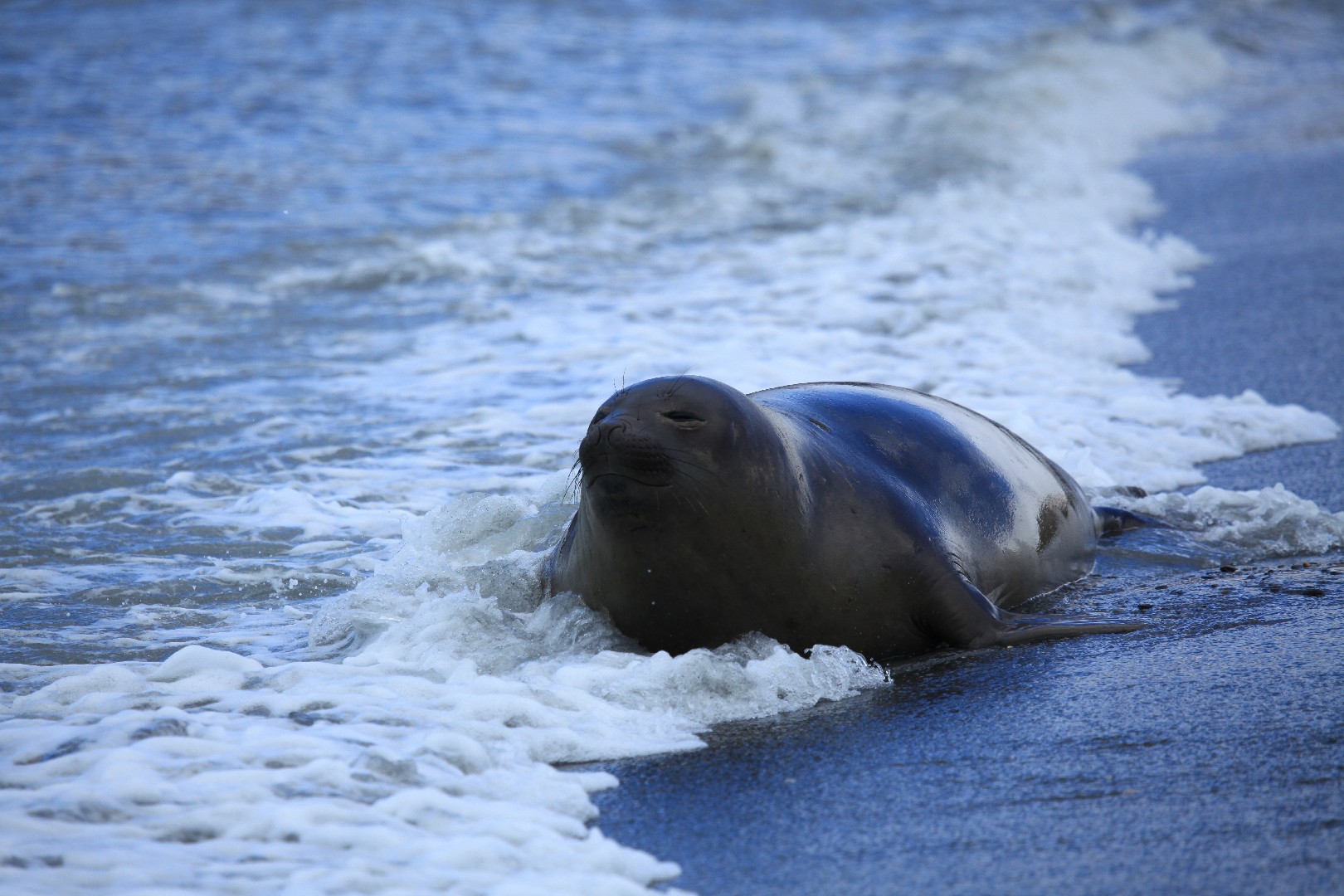Southern elephant seal
A species of Elephant seals, Also known as South atlantic elephant-seal Scientific name : Mirounga leonina Genus : Elephant seals
Southern elephant seal, A species of Elephant seals
Also known as:
South atlantic elephant-seal
Scientific name: Mirounga leonina
Genus: Elephant seals
Content
Description General Info
 Photo By Liam Quinn , used under CC-BY-SA-2.0 /Cropped and compressed from original
Photo By Liam Quinn , used under CC-BY-SA-2.0 /Cropped and compressed from original Description
The southern elephant seal is distinguished from the northern elephant seal (which does not overlap in range with this species) by its greater body mass and a shorter proboscis. The southern males also appear taller when fighting, due to their tendency to bend their backs more strongly than the northern species. This species may also exhibit the greatest sexual dimorphism of any mammal in terms of mass ratio, with males typically five to six times heavier than females. On average female southern elephant seals weigh 400 to 900 kg (880 to 1,980 lb) and measure 2.6 to 3 m (8.5 to 9.8 ft) long, whereas bulls can range from 2,200 to 4,000 kg (4,900 to 8,800 lb) and grow to 4.2 to 5.8 m (14 to 19 ft) in length. For comparison, among the northern elephant seal and the sperm whale (Physeter macrocephalus)--two other large marine mammals that are highly sexual dimorphic by size--males typically outweigh females by a factor of three; exceptionally massive bulls may weigh four times as much as females. Southern elephant seal size also varies regionally. Studies have indicated elephant seals from South Georgia are around 30% heavier and 10% longer on average than those from Macquarie Island. The record-sized bull, shot in Possession Bay, South Georgia, on 28 February 1913, measured 6.85 m (22.5 ft) long and was estimated to weigh a hulking 5,000 kg (11,000 lb), although it was only partially weighed piecemeal. The maximum size of a female is 1,000 kg (2,200 lb) and 3.7 m (12 ft). The eyes are large, round, and black. The width of the eyes, and a high concentration of low-light pigments, suggest sight plays an important role in the capture of prey. Like all seals, elephant seals have hind limbs whose ends form the tail and tail fin. Each of the "feet" can deploy five long, webbed fingers. This agile dual palm is used to propel water. The pectoral fins are used little while swimming. While their hind limbs are unfit for locomotion on land, elephant seals use their fins as support to propel their bodies. They are able to propel themselves quickly (as fast as 8 km/h (5.0 mph)) in this way for short-distance travel, to return to water, to catch up with a female, or to chase an intruder. Pups are born with fur and are completely black. Their coats are unsuited to water, but protect infants by insulating them from the cold air. The first moulting accompanies weaning. After moulting, the coats may turn grey and brown, depending on the thickness and moisture of hair. Among older males, the skin takes the form of a thick leather which is often scarred. Like other seals, the vascular system of elephant seals is adapted to the cold; a mixture of small veins surround arteries, capturing heat from them. This structure is present in extremities such as the hind legs. 
General Info
Lifespan
20-40 years
Diet
Southern elephant seal primarily indulges in a carnivorous diet, largely consisting of squid and fish. Exceptional depths are plunged for foraging, exploiting the rich, deeper sea food stores. Specific prey varies with location.
Appearance
Southern elephant seal is a large, robust marine mammal with a torpedo-shaped body. It has dark, wrinkled skin with patches of short hair. Males develop a pronounced inflatable nose, or proboscis, unique to the species, and can be double the size of females. Adult males also bear battle scars from territorial disputes. The species is characterized by a lack of external ear flaps.
Behavior
Southern elephant seal are highly gregarious, forming large colonies during breeding season. They exhibit sexual dimorphism, with males using their large size and vocalizations to establish dominance and mating rights. As deep divers, they forage in the ocean, primarily eating fish and squid. Their migration patterns remain enigmatic, disappearing from breeding beaches to offshore areas.
Population
Stable
Scientific Classification
Phylum
Chordates Class
Mammals Order
Carnivores Family
Earless seals Genus
Elephant seals Species
Southern elephant seal